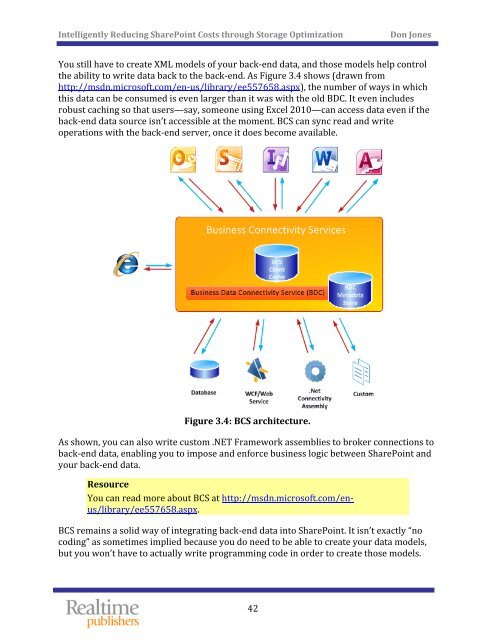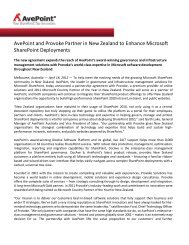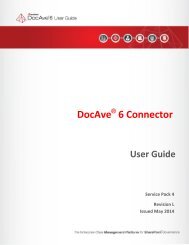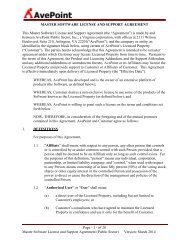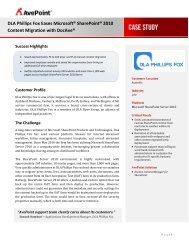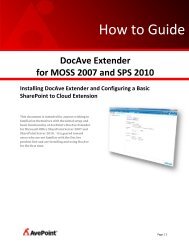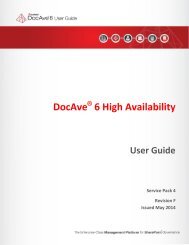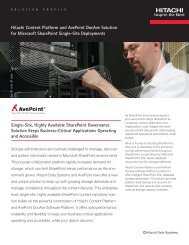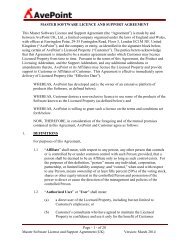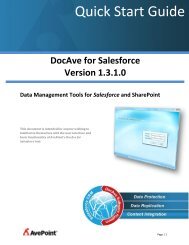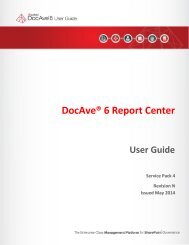The Essential Guide to Optimizing SharePoint Storage - AvePoint
The Essential Guide to Optimizing SharePoint Storage - AvePoint
The Essential Guide to Optimizing SharePoint Storage - AvePoint
Create successful ePaper yourself
Turn your PDF publications into a flip-book with our unique Google optimized e-Paper software.
Intelligently Reducing <strong>SharePoint</strong> Costs through S<strong>to</strong>rage Optimization<br />
Don Jones<br />
You still have <strong>to</strong> create XML models of your back‐end data, and those models help control<br />
the ability <strong>to</strong> write data back <strong>to</strong> the back‐end. As Figure 3.4 shows (drawn from<br />
http://msdn.microsoft.com/en‐us/library/ee557658.aspx), the number of ways in which<br />
this data can be consumed is even larger than it was with the old BDC. It even includes<br />
robust caching so that users—say, someone using Excel 2010—can access data even if the<br />
back‐end data source isn’t accessible at the moment. BCS can sync read and write<br />
operations with the back‐end server, once it does become available.<br />
Figure 3.4: BCS architecture.<br />
As shown, you can also write cus<strong>to</strong>m .NET Framework assemblies <strong>to</strong> broker connections <strong>to</strong><br />
back‐end data, enabling you <strong>to</strong> impose and enforce business logic between <strong>SharePoint</strong> and<br />
your back‐end data.<br />
Resource<br />
You can read more about BCS at http://msdn.microsoft.com/enus/library/ee557658.aspx.<br />
BCS remains a solid way of integrating back‐end data in<strong>to</strong> <strong>SharePoint</strong>. It isn’t exactly “no<br />
coding” as sometimes implied because you do need <strong>to</strong> be able <strong>to</strong> create your data models,<br />
but you won’t have <strong>to</strong> actually write programming code in order <strong>to</strong> create those models.<br />
42


